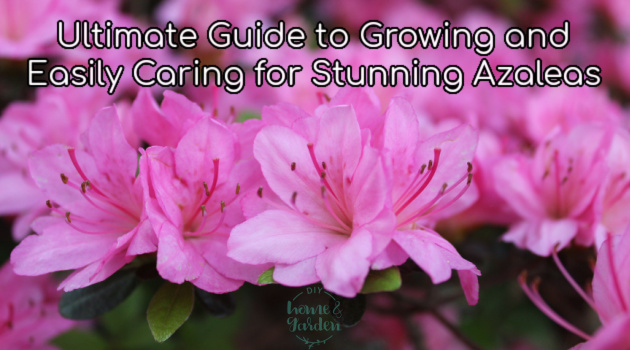To grow roses is one big daunting task to many, but the reward is enormous!
The truth is that these flowering perennials grow and produce their best when properly planted and cared for. Well, while some credit their dazzling blossoms to bananas, eggshells, and alfalfa, others believe in the power of their brewed coffee.
Fact or fiction! What works and what doesn’t?
Answers to the FAQs about Growing Roses
We will share the tips to grow roses in your backyard. But first, we’ll sort out the fact from fiction.
Do roses like banana peels?
Among many other nutrients, bananas contain potassium and phosphorus, which, when decomposed, helps stimulate better growth and bloom in roses.
Use either of the methods below to put banana peels to work:
- Chop the peels and bury the peels about four inches underneath the rose plant. Be sure to target the area underneath the leaves and not against the stem. Dig carefully, making sure not to disturb the roots.
- Adding a little water, crush the banana peels in a blender, then allow the solution to stand for fifteen minutes. Directly apply this mixture to the soil beneath your rose. For the solid residue, simply toss it onto your compost pile.
Do roses like coffee grounds?
Yes, says the Agriculture Extension team at Oregon State University, coffee grounds make excellent all-around compost for your garden. That’s because they contain most of the nutrients (including some nitrogen) that rose bushes need, especially in the spring as they embark on new growth.
Apply in April or May when the new leaves set out. Use two gallons of water for half a pound of used coffee grounds per rose.
Note: Avoid adding coffee grounds to your roses after August to not encourage new tender growth, which may end up suffering the wrath of winter weather.
Perhaps one of the easiest ways to utilize coffee grounds for roses includes adding the spent coffee to your compost or using them as mulch and fertilizer.
Are eggshells good for roses?
Eggshells are rich in calcium, which helps strengthen rose plants’ root systems and cell tissue walls, enhancing their disease and pest resistance. It’s also the source of lush, healthy green foliage you often see on rose bushes.
Are roses hard to grow?
Roses are relatively easy-to-grow shrubs as long as you offer them the right growing conditions.
To satisfy their heavy nutrient appetite, they are not over-particular about soil but will appreciate a rich loam soil with a slightly acidic to neutral pH.
For poor and heavy clay soils, consider working in organic matter to help improve drainage and boost the nutrient content.
How do roses grow for beginners?
Traditionally, roses are very demanding and susceptible to many diseases, thus requiring lots of tender care.
But thanks to the carefully bred low-maintenance varieties that allow you to grow these beauties year after year without fancy pruning and spraying, simply plant and savor.
As a beginner, start with easy care varieties such as Knock Out, Flower Carpet, and the David Austin Climbing roses—then later transition to the other types.
Where do roses grow, in sun or shade?
Generally, roses thrive in full sun, but some varieties prefer partial shade.
Also, gardening in scorching growing conditions with limited water will allow roses to appreciate shelter (shade) from the scorching afternoon heat.
Do roses like full sun?
Though they will take a bit of shade, roses love full sun, requiring at least 6 hours of sunlight a day—to grow and bloom their best.
Do roses grow in the shade?
No rose bush will thrive and flower without some sun; however, a few cultivars will do just well with a bit of shade.
They include Rosa floribunda ‘Anthony Meilland,’ ‘Carefree Wonder’ Rose, ‘Eden Climber’ Rose, ‘Ballerina’ Rose, ‘Fair Bianca’ Rose, among others.
Note: A little shade for roses implies at least four to five hours of unfiltered, direct sunlight a day. Otherwise, the stems may become leggy and sparse, with few blooms.

Do roses need lots of water?
Roses require regular watering—every other day for the newly planted bushes—especially in dry weather, so the plants can establish.
Once established, your rose plants will begin sending out new growth.
Do roses like wet soil?
To grow roses successfully, ensure the soil is well-draining. Consistently soggy or wet soil conditions lead to root rot and the eventual death of your roses.
What is the best homemade fertilizer for roses?
Alfalfa meal is among the best homemade rose fertilizers as it stunts weeds and adds shine to the plants. As it breaks down, alfalfa yields triacontanol (an alcoholic substance) from which roses draw their particular brilliance.
The University of California Cooperative Extension Master Gardeners newsletter suggests making an alfalfa tea to pour around the base of your rose bushes. Start this application in the springtime, then reapply every four to six weeks during the blooming season.
What is the best way to grow roses?
Roses grow best when offered the right growing conditions and maintained regularly.
How to Grow Roses (and Maintain Them) in Seven Easy Steps
Hit these seven simple must-haves for growing bigger and healthy roses.
- Site: Select a sunny home. Roses crave sunlight; providing them at least six to eight hours a day is ideal.
- Soil: Grow roses in rich, well-drained soil with a pH of 6.5-7.0. Mix compost into the ground during planting to enrich the plants with nutrients as they begin the growth process.
- Mulch: Apply coarse organic mulch (two to three inches) around the roses to help with moisture retention and prevent water from splashing on the leaves when it rains or during irrigation, reducing the chances of fungal diseases.
- Watering: Water your rose plants deeply but infrequently, relying on the prevailing weather conditions to establish how much to offer. The goal is to keep the soil consistently moist and not overly wet. Use a soaker hose or drip irrigation to easily direct the water onto the earth. This is an excellent technique if your watering schedule falls late in the day since it leaves the plant’s foliage dry.
- Fertilize: You must regularly apply fertilizer if you hope to grow impressive roses.
- Inspect: Check your roses frequently for disease outbreaks or insects. It’s a lot easier to deal with problems early enough when they manifest.
- Prune: Once leaf buds emerge in the spring, make cuts about six mm (1/4 inch) above the bud eyes, then prune out any unhealthy branches.

The Takeaway: You Can Grow Roses Successfully When You Give Them What They Need
Roses simply give back what you offer them; excellent care equals rich blooms and shiny foliage.
A few ideal spots to grow roses around your property include front yard, back yard, side passage, balcony, deck, or terrace.


